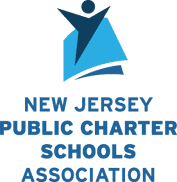Report: 1 in 3 districts lack dedicated cybersecurity personnel – By Micah Ward, District Administrator
Over the past few years, K12 technology leaders have witnessed a significant uptick in the number of cybersecurity-related threats targeting public schools. As a result, school administrators worry they lack sufficient resources to combat this alarming trend.
That’s according to Clever’s latest “Cybersecure 2024” report, a snapshot of some of the most pressing issues in K12 cybersecurity based on responses from more than 800 school administrators across the country.
The report suggests that at least one in three districts ranked a lack of dedicated cybersecurity personnel as their “top challenge” in safeguarding their schools, which mirrors similar findings published by CoSN last year which revealed a lack of cybersecurity resources and budget restraints among K12 district leaders to combat cyber threats.
Districts that experience a cyberattack are more likely to express a need for additional resources to invest in cybersecurity safeguards.
“Our collaborative stance on cybersecurity was strengthened by experiencing a major ransomware attack,” Christ Fisher, chief technology officer at Normal Public Schools, said in the report. “It emphasized the need for cybersecurity insurance and the critical role of cross-departmental cooperation in negotiating and understanding the financial aspects of cyber risk.”

New Jersey finds way to fund charter school buildings – By P. Kenneth Burns, WHYY
Charter and renaissance schools now have a way to support their building projects through a low-interest loan program. Gov. Phil Murphy signed a bill Tuesday approving the funding program.
Harry Lee, president and CEO of the New Jersey Public Charter School Association, called it a “landmark” move because the state never funded charter schools’ capital improvement projects.
“This is a huge step in the right direction,” he said. “To have a charter facilities loan program on the books is a major win for students and families in our urban charter schools.”
Over the next decade, $900 million is needed to address the building needs of charter schools, according to a survey by the association.
The state Economic Development Authority will administer the new loan program. The total amount for the fund will be allocated during the budgeting process.

Are government subsidies the solution to the child care crisis? Lawmakers weigh options. – By Jackie Hendry, South Dakota New Watch
Legislative leaders agree that the ongoing child care crisis in South Dakota represents a significant workforce problem. A bill authorizing a statewide cost study of child care is likely to drop soon, but advocates worry lawmakers lack a sense of urgency.
Child care centers are struggling to hire workers in part because pay in the industry lags behind most other industries. It's a nationwide problem. In 2021, U.S. Treasury Secretary Janet Yellen said child care workers make on average $27,000 a year, putting them in the bottom 2 percent of occupations.
That low wage can make recruitment and retention difficult, leading child care centers understaffed. Without adequate staff, centers can't care for their licensed capacity of kids – leading to a shortfall of funds for the center and a shortage of care slots for families.
During a town hall hosted by South Dakota Public Broadcasting in October, Early Learner South Dakota Director Kayla Klein explained it's not as simple as raising prices to offer staff more competitive wages.

AI in Wash. schools: Reykdal introduces statewide ‘human-centered use’ – By Frank Sumrall, My Northwest
Washington became one of the first states in the nation to publish a state-level guidance on AI use in its public schools after the Office of Superintendent of Public Instruction (OSPI) released a “roadmap” on how public schools can implement artificial intelligence (AI).
Rather than banning the use of AI and other artificial chatbots, OSPI wants to urge “thoughtful, human-centered use” of these tools, according to the published guideline.
“Our commitment is not just to integrate AI into the classroom,” Washington State Superintendent Chris Reykdal said in his opening message in the guidance. “It’s to do so with a vision that places our educators and students at the center of this digital revolution with a priority for human inquiry that uses AI for production, but never as the final thought, product or paper.”
Reykdal stated the AI policy would be a “human to AI to human” approach — beginning with human inquiry, then applying AI tools and lastly have someone evaluate and edit the results — expanding the possibilities of AI beyond a school’s fears of it only being just a means for increased plagiarism and cheating.











